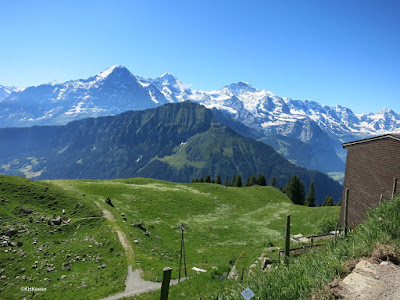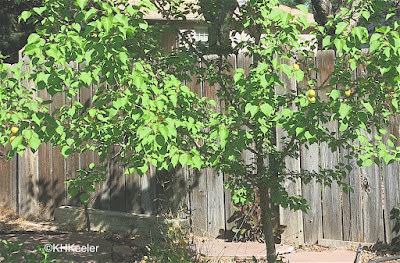Sunday, July 29, 2018
Plant Story--Apricot Folklore
Apricots (Prunus armeniaca, see previous post link) have been in cultivation more than 5,000 years, so of course there are all kinds of folk tales.
The plant was probably domesticated in China--it is mentioned in texts from about 500 BCE. Apricots in flower became the floral symbol of the second month of the Chinese calendar. The second month generally corresponds more to March than February since the Chinese lunar calendar begins with the first new moon after the half-way point between the winter solstice and spring equinox. In China under the emperors, civil service jobs, highly desirable jobs, were chosen by testing the candidates in very difficult examinations. Those were administered at the beginning of the year, so apricot flowers in the second month were also "successful candidate flowers" as examinations were completed and winners announced. I don't have a photo that I am sure is Prunus armeniaca in flower, so here it is online link. Other apricots, for example the Japanese apricot, Prunus mume, flower later in the spring.
Sunday, July 22, 2018
Visiting Switzerland--Enjoying Mountain Wildflowers
This was a visit into the mountains of Switzerland simply to enjoy being there, which meant mountain scenes, cheese and chocolate, and especially, the flowers.
The flora of Northern Europe has many similarities to that of eastern North America and high elevation plants in the Alps have close relatives in the Rocky Mountains, so I knew many of the plants. Sort of. Because, apart from widespread weeds, North America's plants are only related to Europe's, not identical.
Where I actually knew the plants, they were European natives that are now weeds in North America.
Of course the dandelion, Taraxacum officinale (sunflower family, Asteraceae) - a source of food and medicine across the Europe in the 17th century, so it brought to North America intentionally, then we stopped using it and it got away.
The flora of Northern Europe has many similarities to that of eastern North America and high elevation plants in the Alps have close relatives in the Rocky Mountains, so I knew many of the plants. Sort of. Because, apart from widespread weeds, North America's plants are only related to Europe's, not identical.
Where I actually knew the plants, they were European natives that are now weeds in North America.
Of course the dandelion, Taraxacum officinale (sunflower family, Asteraceae) - a source of food and medicine across the Europe in the 17th century, so it brought to North America intentionally, then we stopped using it and it got away.
 |
| dandelions in Switzerland |
Sunday, July 15, 2018
Plant Story--Adaptable Apricots
Sunday, July 8, 2018
Plant Story--Needle-and-Thread Grass, Graceful and Sharp
Needle-and-thread grass (Hesperostipa comata, formerly is Stipa comata, grass family Poaceae) is native to the northwestern three quarters of North America, found especially on dry or sandy sites. It is a beautiful grass, with long slightly nodding heads that catch the sunlight and nod in the wind.
Sunday, July 1, 2018
Wishing You a Happy July
 |
| Swiss Alps |
Almost always, creating a post for this blog is great fun. But I'm jet-lagged having just returned from Switzerland. Since Switzerland is 7 hours ahead of Colorado, I am alert in the middle of the night and sleepy at dinnertime. Writing well-thought-out sentences eludes me.
What to do? Share photographs. It is a big beautiful world. Message: get out, observe, enjoy.
Subscribe to:
Comments (Atom)




